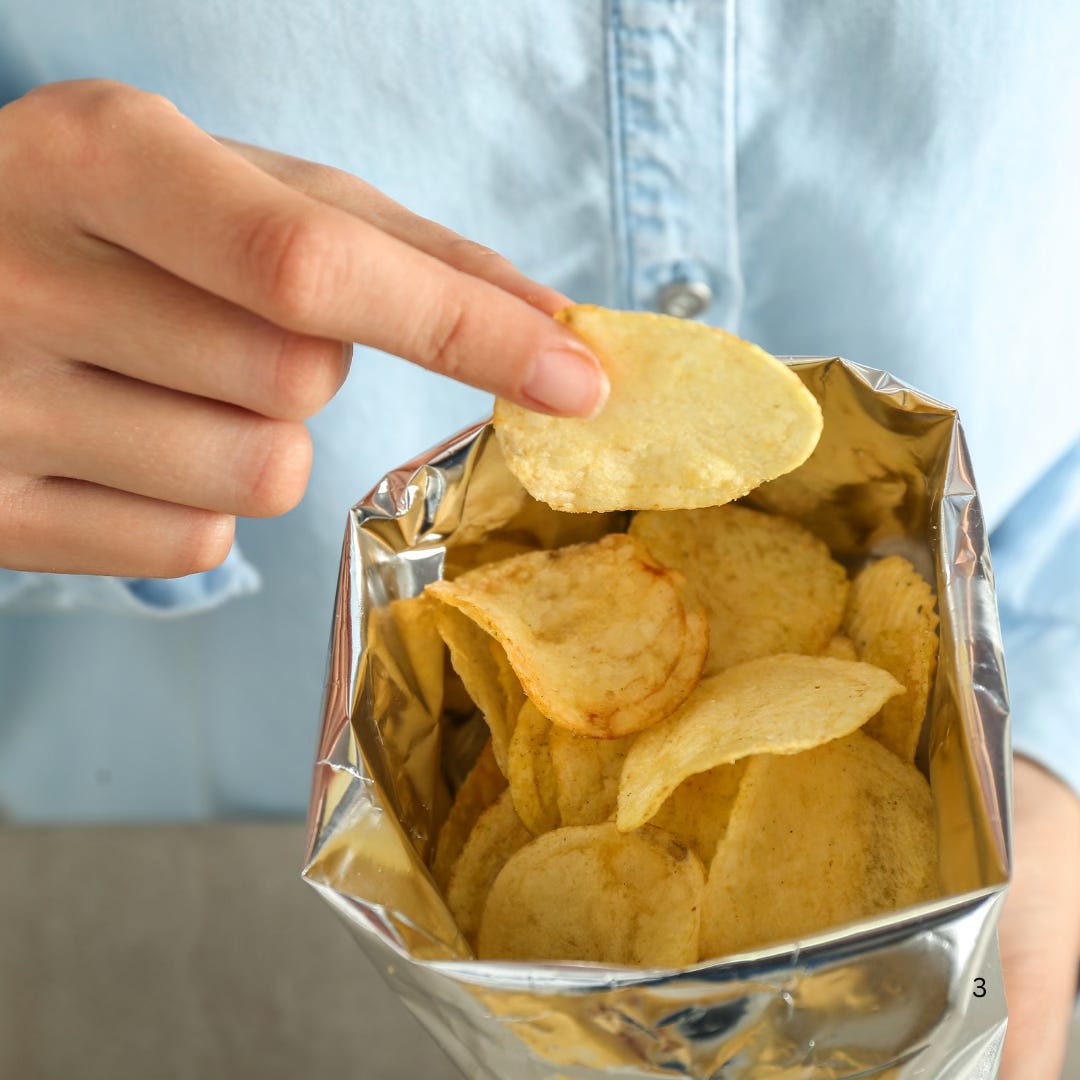Food Cravings Are All in Your Head
Find out what your body really wants when you desire your favorite foods.
How Food Cravings Happen
I probably don’t have to tell you what a food craving is, because if you know, you know. But just so we’re all on the same page, food cravings are intense and persistent desires for a specific food that, for many people, are often full of fat, sugar, salt, or a combination of the above.
Food cravings begin in the brain and they’re all about the pursuit of pleasure. Seeing, smelling, or even daydreaming about a favorite food can set the urge to eat in motion.
When that first thought, sight, or whiff of chocolate chip cookies, donuts, potato chips or any other much-loved food crosses your mind, it activates the brain’s reward system, which is largely controlled by dopamine and located in a part of the brain called the hypothalamus. Dopamine is a neurotransmitter associated with pleasure, and it relays messages to nerves that result in positive feelings linked with rewarding experiences.
There’s no scientific evidence that we gravitate toward certain foods because of their nutrient profile. If that idea rang true, you’d crave cooked spinach as much as dark chocolate because it has about the same amount of magnesium.
There may be times when you really want a big, crunchy, fresh green salad topped with grilled chicken or a piece of roasted salmon with vegetables and crusty bread. But more often than not, you desire the likes of pastry, ice cream, and orange cheese puffs because they taste really good to you.
Humans are creatures of habit, and when you satisfy a food craving, it ingrains a pleasurable memory on the brain which reinforces the behavior. That means if you find eating fresh-baked brownies comforting or fun, you’ll want to do it again. The memory of how that food makes you feel keeps you coming back for more.
Pleasure seeking aside, there are other reasons for food cravings in midlife, including a poor diet, inadequate sleep, stress, and perimenopause.
Perimenopause and Food Cravings
Perimenopause can intensify food cravings for several reasons. Estrogen helps regulate feelings of fullness. During perimenopause, less estrogen makes its way to the brain, and you may not feel as satisfied after eating as you did before perimenopause began. As a result, you may crave foods that you know will fill you up and make you feel good.
Perimenopause is often associated with increased anxiety, sadness, or chronic stress, which can lead to longings for "feel-good" foods. Prolonged stress can elevate the hormone cortisol and influence food choices and eating behaviors. Research suggests that higher levels of cortisol are associated with stress-eating. Repeatedly relying on tasty foods to produce pleasure or calm your nerves can condition your brain to seek out this response over and over.
A lack of sleep during perimenopause (or any time of life) messes with the hormones that regulate hunger and fullness which can result in decreased eating satisfaction. Tired people often crave a pick-me-up to get them through the day. Foods that contain sugar and other highly-refined carbohydrates produce an energizing boost that makes you feel more alert in just minutes. If the food has little or no fat, protein, or fiber, such as jelly beans, Swedish fish, or a sugary carbonated drink, that boost will occur even faster.
How to Deal with Food Cravings
There’s nothing wrong with pining for burgers and fries, BBQ chicken wings, or a hot fudge sundae, but if you’re having these desires on the daily, it’s time to evaluate your overall eating pattern.
Eating satisfaction is vital for limiting food cravings. Severe calorie restriction is likely to increase intense desires for foods that you won’t allow yourself to enjoy because you’re trying to lose weight. An eating plan with adequate protein and fiber curbs the hunger that can lead to food cravings. Read this about protein to find out how much you need every day, and this post about fiber for how to include more in your diet.
If you’re eating enough protein, fiber, and calories, and you’re still craving cookies, candy, and Doritos on a regular basis, a low mood may be the reason. Higher levels of endorphins help reduce stress and anxiety that can trigger food cravings. Endorphins are hormones the brain releases to help relieve stress and improve your outlook. Regular exercise increases endorphin concentration. You may also want to consider speaking with a registered dietitian nutritionist (RDN) about your eating pattern.
Food is more than fuel and it’s OK to eat for pleasure. That’s why I’m not a big fan of swapping the food you really want, like super premium strawberry ice cream, for a lower-calorie option such as plain nonfat Greek yogurt with strawberries. Opting for the “healthier” alternative can backfire. You may not be satisfied with the lighter choice and end up eating the ice cream anyway! (Been there.) It’s better to enjoy a small amount of the food you desire as part of a balanced diet than to entirely deny yourself.
What do you think? Do you have food cravings? Let me know in the comments!






Totally agree that over restricting can really exacerbate cravings. It’s just your brain trying to counter what it sees as deprivation.